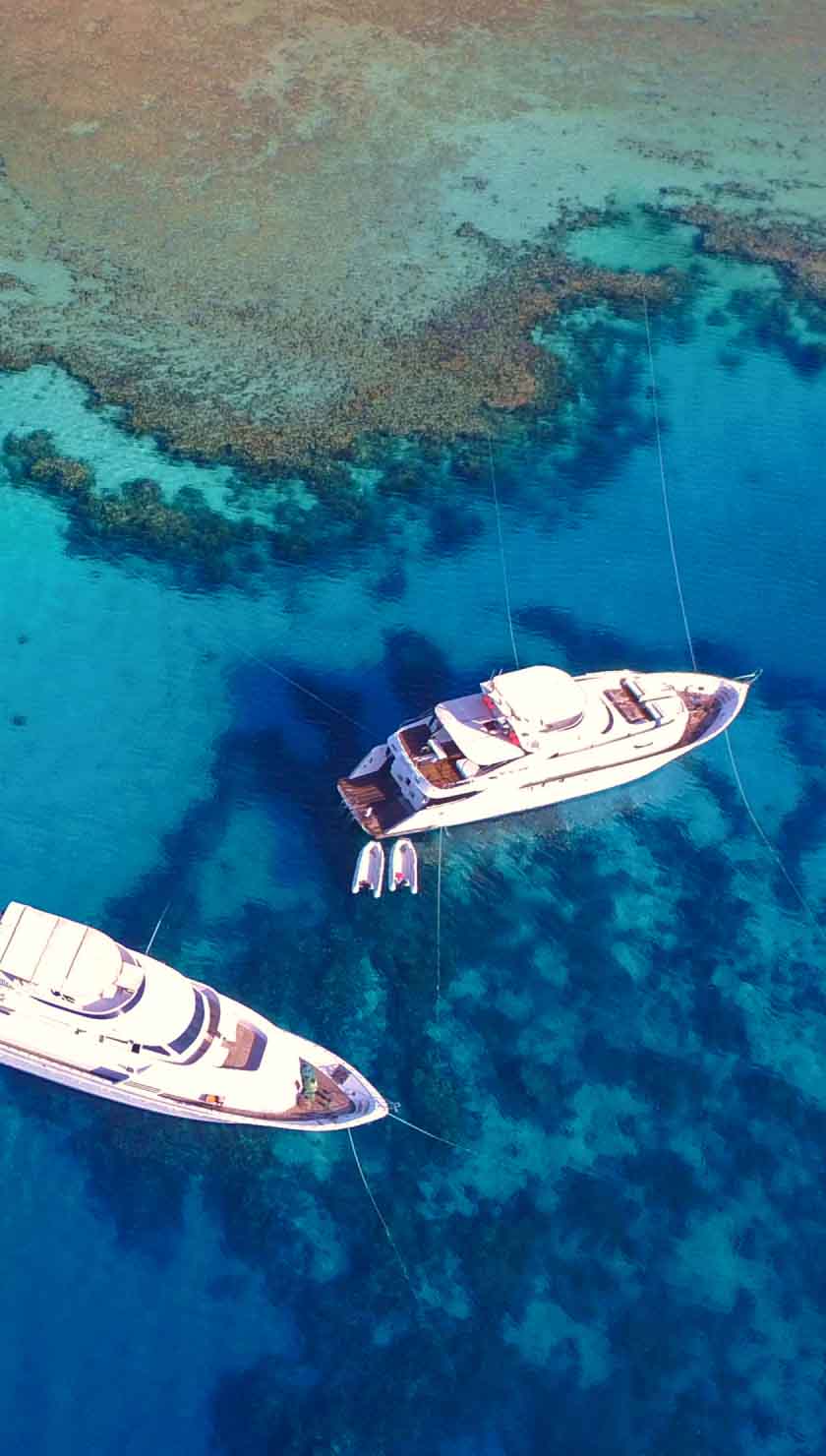Koh Lanta, located approximately 70 kilometers south of Krabi, offers some of the best diving on the west coast of Thailand, boasting vibrant reefs, dramatic drop-offs, alluring caves and wrecks. Liveaboard diving in the South Andaman Sea presents a wealth of offerings just off the front door of Phuket. Diving on Koh Lanta offers some of the best dive sites in Thailand. Leading the way are Hin Daeng and Hin Muang, underwater pinnacles covered with carpets of anemones, sponges, and sea fans, which host regular whale sharks and manta rays. Experienced divers are best suited to the currents swirling around these pinnacles. A typical itinerary on our South Andaman Sea liveaboard safaris includes dives at Phi Phi, Koh Haa, Koh Rok, Shark Point, and Anemone Reef. Along with its 3 main islands, Ko Klang, Ko Lanta Yai, and Ko Lanta Noi, another fifty or so islands gather to form the Mu Koh Lanta National Park.
As with the rest of the South Andaman Sea, the best time to dive in Koh Lanta is between November and the end of April, when diving conditions are favorable. Koh Lanta’s west coast has exceptional beaches and a more relaxed feel than its neighboring Ko Phi Phi and Phuket islands.
What you can see
Koh Lanta has easy access to the twin seamounts of Hin Daeng and Hin Muang, two of the best dive sites in Thailand. Renowned for their pink and purple corals, these sites offer interesting topography and incredible marine life. Second, to the northern islands of the Andaman Sea, the area is best placed for Whale Shark sightings; other pelagics, such as the grey reef sharks and leopard sharks, have been known to grace the waters.
The majority of dive sites are between Phuket and the mainland. The area is wide, and the dive sites differ in topography, with shallow coves, deep drop-offs, limestone outcrops, seamounts, and undersea caves to explore. You can expect to see brightly colored reefs, usual suspects, gorgonian sea fans, blacktip reef sharks, anemone fish, and the occasional solitary hawksbill turtle, along with a more varied marine life such as sea whips, bearded scorpionfish, groupers, ghost-pipefish.
The area has similar water conditions, with good visibility and varying currents.
Getting There
Liveaboard.com offers good itineraries covering the best Thailand liveaboards on the West Coast. The best way to get to Koh Lanta is to arrive at Krabi or Phuket International Airport and join a Thailand liveaboard trip from Chalong Pier in Phuket or Khao Lak. The nearest airport to Koh Lanta is Krabi Airport - fly from Bangkok with THAI Airways, Air Asia, or Bangkok Airways.
Important to note there are two airports in Bangkok. If you are arriving in Bangkok on an international flight, check to see if your departure airport to Krabi / Phuket is the same as your arrival in Bangkok. Transferring between airports can take up to 3 hours and is not recommended.











